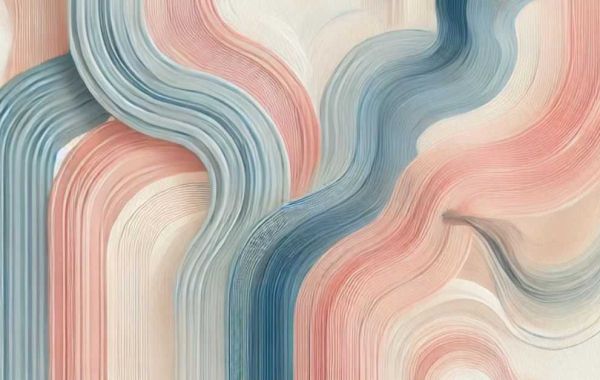Abstract art is a form of creative expression that breaks away from traditional and realistic depictions, focusing instead on shapes, colors, lines, and textures. It challenges the boundaries of art and encourages viewers to connect with the work on an emotional and interpretive level. Unlike conventional art, which often tells a specific story or reflects tangible reality, abstract art allows infinite possibilities of interpretation.
This artistic form has been celebrated for its ability to evoke emotions, spark imagination, and bring unique aesthetics to homes, galleries, and public spaces. Whether you’re an art enthusiast, collector, or someone curious about abstract art, understanding its origins, styles, and significance offers a deeper appreciation of its value in the art world.
What is Abstract Art?
Abstract art refers to a style of art that does not rely on realistic representations. Instead, it uses shapes, colors, and forms in non-representational ways. This approach allows the artist to express thoughts, emotions, and concepts without adhering to the confines of realism.
The beauty of abstract art lies in its flexibility. Each viewer sees something different in a piece, depending on their perspective and emotional response. For some, it might evoke feelings of joy or energy, while for others, it could inspire calmness or introspection. This open-ended nature of abstract art makes it universally appealing and timeless.
The Origins of Abstract Art
The roots of abstract art can be traced to the late 19th and early 20th centuries when artists began to break away from traditional artistic rules. The rise of abstract art was a response to the rapid social, technological, and cultural changes occurring at the time. Artists sought new ways to represent ideas and emotions beyond realistic depictions.
Key Influences and Pioneers
- Wassily Kandinsky: Often regarded as the pioneer of pure abstract art, Kandinsky believed that colors and shapes could evoke spiritual and emotional responses. His works broke away from recognizable forms and explored the use of color as a language.
- Pablo Picasso and Georges Braque: Through the development of Cubism, they deconstructed subjects into geometric forms, laying the groundwork for abstraction.
- Kazimir Malevich: Known for his Suprematism movement, Malevich focused on geometric shapes and reduced art to its simplest forms.
- Jackson Pollock: A key figure in Abstract Expressionism, Pollock’s drip-painting technique emphasized spontaneity and movement, revolutionizing how art could be created and experienced.
Abstract Art in the Modern Era
Over time, abstract art has evolved into various forms, reflecting the changing ideas and techniques of artists across generations. Today, abstract art continues to thrive in contemporary galleries and homes, symbolizing creative freedom and individuality.
Types of Abstract Art
Abstract art encompasses a wide range of styles and techniques, each offering a unique visual and emotional experience. Here are some of the most popular types of abstract art:
1. Abstract Expressionism
Abstract Expressionism emerged in the 1940s and 1950s as an art movement focused on conveying emotions through bold colors, dynamic brushstrokes, and unrestrained creativity. Artists like Jackson Pollock and Mark Rothko emphasized spontaneity and personal expression in their works.
2. Geometric Abstraction
Geometric abstraction is characterized by the use of precise shapes, lines, and forms. This style often conveys order and harmony, as seen in the works of Piet Mondrian and Kazimir Malevich.
3. Lyrical Abstraction
Lyrical abstraction emphasizes fluidity, movement, and personal emotion. Unlike geometric abstraction, it focuses on free-form compositions that create a sense of rhythm and spontaneity.
4. Minimalist Abstraction
Minimalist abstraction reduces art to its simplest elements, using clean lines, minimal colors, and subtle forms. This style creates a sense of calmness and simplicity while inviting viewers to focus on the essence of the artwork.
5. Action Painting
Popularized by Jackson Pollock, action painting is a dynamic style where artists use splattering, dripping, and throwing paint onto the canvas. The energetic process itself becomes an integral part of the artwork.
The Emotional Impact of Abstract Art
One of the most compelling aspects of abstract art is its ability to evoke deep emotional responses. By using color, form, and composition, abstract artists can communicate feelings that go beyond words. This is why abstract art resonates with viewers on a personal level.
For example:
- Bold and vibrant colors can evoke feelings of energy, excitement, and passion.
- Soft and subtle palettes may inspire calmness, serenity, and introspection.
- Dynamic and chaotic compositions can express movement, tension, or transformation.
Each viewer brings their own experiences and emotions to an abstract artwork, creating a unique connection that enhances its meaning.
Abstract Art in Home Decor
In recent years, abstract art has become a popular choice for home and office decor due to its versatility and modern appeal. Whether you’re looking for a statement piece for your living room or subtle accents for your workspace, abstract art can elevate the aesthetics of any environment.
How to Incorporate Abstract Art into Your Space
- Choose a Focal Point: A large abstract art piece can serve as the centerpiece of a room, adding vibrancy and personality to the space.
- Complement the Color Palette: Select abstract art that harmonizes with your existing decor or introduces a pop of contrast for visual interest.
- Experiment with Different Textures: Textured abstract art, such as mixed media or thick paint applications, adds depth and dimension to walls.
- Create a Gallery Wall: Combine multiple abstract art pieces of varying sizes and styles to curate a unique and personalized gallery.
- Consider Scale and Placement: Ensure the size and placement of the artwork match the proportions of the room to create balance.
Why Abstract Art Remains Timeless
Abstract art holds a timeless quality because it transcends the confines of traditional art. Its focus on creativity, emotion, and interpretation ensures its relevance across generations. Here’s why abstract art remains a cornerstone of modern and contemporary art:
- Freedom of Expression: Abstract art represents artistic freedom, allowing artists to explore new techniques, ideas, and perspectives.
- Endless Interpretations: Each viewer can interpret abstract art differently, making it a personal and engaging experience.
- Versatility: Abstract art adapts to various settings, from galleries and museums to homes and public spaces.
- Cultural and Emotional Resonance: By evoking universal emotions and themes, abstract art connects people from all walks of life.
Conclusion
Abstract art is more than just a visual experience; it is a powerful expression of creativity, emotion, and individuality. By breaking away from the rules of realism, abstract art invites viewers to explore their imagination, interpret its meaning, and connect with the artwork on a personal level.
From its origins in the early 20th century to its presence in modern homes and galleries, abstract art continues to inspire and captivate audiences around the world. Whether you are an artist, a collector, or someone looking to bring a touch of creativity to your space, abstract art offers something unique and timeless.
Embrace the beauty of abstract art and let it transform the way you see and feel about the world of art.







